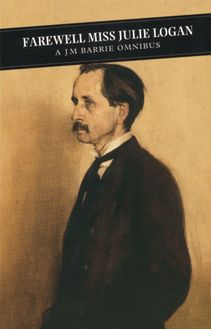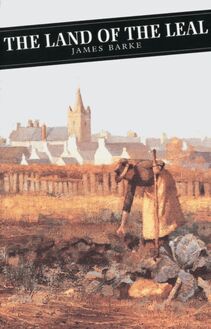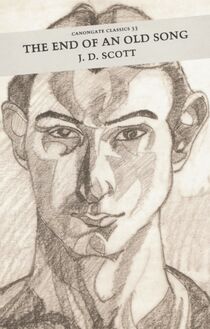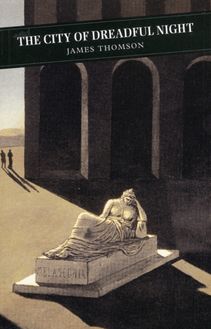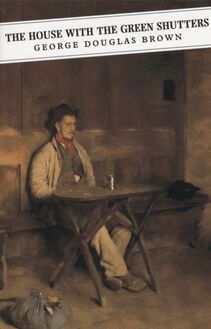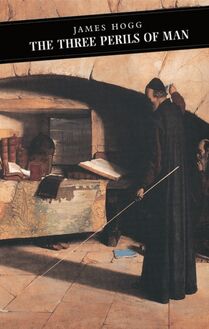Story of My Boyhood and Youth , livre ebook
61
pages
English
Ebooks
2010
Vous pourrez modifier la taille du texte de cet ouvrage
Obtenez un accès à la bibliothèque pour le consulter en ligne En savoir plus
Découvre YouScribe en t'inscrivant gratuitement
Découvre YouScribe en t'inscrivant gratuitement
61
pages
English
Ebooks
2010
Vous pourrez modifier la taille du texte de cet ouvrage
Obtenez un accès à la bibliothèque pour le consulter en ligne En savoir plus
Publié par
Date de parution
01 juillet 2010
Nombre de lectures
0
EAN13
9781847675880
Langue
English
Publié par
Date de parution
01 juillet 2010
Nombre de lectures
0
EAN13
9781847675880
Langue
English
Contents
Introduction
ONE A Boyhood in Scotland
TWO A New World
THREE Life on a Wisconsin Farm
FOUR A Paradise of Birds
FIVE Young Hunters
SIX The Ploughboy
SEVEN Knowledge and Inventions
EIGHT The World and the University
Introduction
During the 1960s a straggle of Americans came to Scotland to see the place where John Muir was born in 1838 and the scenes he so vividly describes in the first chapters of an autobiography written seventy years later but never finished. That book was simply entitled The Story of My Boyhood and Youth : a boyhood lived in Dunbar, East Lothian until he was eleven, and a youth spent until the age of twenty-three with a god-fearing and tyrannical father on a homestead on the Wisconsin frontier. These Americans told us, as we were later to find out for ourselves, how Muir was venerated in California as the defender of the Wilderness areas of America; as the father and philosopher of their National Parks; as the founder of the Sierra Club (the first great campaigning organisation for conservation); and as a splendid writer revelling in the inter-connectedness of all nature: ‘When we try to pick out anything by itself we find it hitched to everything else in the Universe.’ John Muir has become a saintly hero to the youth of America, and his message gets a ready response: ‘Go climb the mountains and get their good tidings. Nature’s peace will flow into you as sunshine flows into trees. The winds will blow their own freshness into you and the storms their energy, while cares will drop off like autumn leaves.’
Yet John Muir has not been well known in Scotland. He was one of those talented Scots who had emigrated and been forgotten in their homeland. He was a contemporary of Carnegie, but his legacy was of ideas rather than money. Muir’s message is as vital to today’s Scotland as Carnegie’s funds have been, and so, during the ‘Countryside 1970’ campaign, I helped to mount an exhibition by East Lothian County Council to re-introduce him to Scotland. This was followed in 1979 by an exhibition at the National Library of Scotland which by then had acquired all his published works, ten volumes of them, including marvellous nature writings such as My First Summer in the Sierra , which will be published later in this series.
My Boyhood and Youth begins with a fascinating account of Muir’s schooldays in Dunbar, where teachers worked on the principle ‘that there was a close connection between the skin and the memory, and that irritating the skin excited the memory to any required degree’. It tells of the ‘natural savagery’ of boys, with their delight in wild nature and in ‘Saturday runaways over the breezy hills like the hounds’. And then the return home to a thrashing, but never a thrashing on Sundays, for that would disturb the calm of the Sabbath.
The remainder of the book takes us to the unspoiled natural world that the emigrants found and the hard, hard work they faced clearing the land and making a living from it. Homesteading laws in America entitled a settler to own 120 acres of land if he cleared it for crops, built a house, and lived on it for five years. Although the prairies were beginning to be opened up when the Muirs arrived, they chose, through the advice of Scots already settled there, an idyllic lot in Wisconsin called Fountain Lake. Nowhere could have been more perfect for the future naturalist, ‘every wild lesson a love lesson, not whipped but charmed into us. Oh, that glorious Wisconsin wilderness.’ John, now twelve years old, was put to work ploughing and grubbing out the roots of trees and as the eldest son he not only bore the brunt of the work, but drove himself to excel all comers. The old Scots adage ‘’Tis dogged as does it’ guided him then and for the rest of his life. This is nowhere better described than in the episode where he chiselled out the eighty-foot deep well at Hickory Hill, where the family had moved in 1855 to break in another farm after the soil of Fountain Lake had become exhausted.
And so it might have gone on, but John had a quenchless thirst for knowledge and a genius for inventing labour-saving devices. These he made by whittling away at the local fine hickory and using scraps of metal. Eventually he perfected a gadget that registered and struck the hours and by means of a set of levers and cogwheels would tip his bed up at any desired time an ‘early-rising machine’ which enabled him to pursue his reading before going to a seventeen-hour day in the fields. It was these unlikely wooden machines that first drew attention to John, and he took them to the Wisconsin State Agricultural Fair in September 1860, when he was twenty-one. Wisconsin was just starting to be industrialized at this time and the originality of such inventions from the backwoods made a great impression. He got himself a place in the University and into manufacturing to earn his keep for the next four years his father insisting that he depended entirely on himself.
One matter that may concern the reader of this volume is the relationship John had with his father, Daniel Muir. The elder Muir arrived in Dunbar as a handsome ambitious recruiting sergeant in 1829. He married a young heiress and inherited a grain and food store, but after her early death he married Ann Gilroy. Ann had been brought up to believe that under God a man was master in his own household, but it was she who was the ‘still centre’ of the Muir’s close family of three sons and four daughters. Daniel was a religious fanatic who combined stern military discipline with a passionate belief in liberty and equality for all men. This attracted him to a sect called ‘The Disciples of Christ’, founded by Thomas Campbell who had carried his evangelism to America. It was this conversion together with the ambition to own land and escape the restrictions of smalltown life that led Daniel to uproot his family from Dunbar. In America Daniel drove his sons and daughters hard, but he himself preferred preaching to working. He truly thought himself to be a Man of God. It was his cruelty to animals, particularly the poor beast Nob, which turned John against him and led him to question a religion so devoid of love. Despite this and the abominable treatment he received, John could not bring himself to speak ill of his father, and at the old man’s death-bed in September 1885 he recognized that ‘in all our devious ways and wanderings we have loved one another’.
My Boyhood and Youth ends in 1863 when, after ‘so many hungry and happy hopeful days’, Muir left Wisconsin University for the ‘University of the Wilderness’. But first he exploited his inventions and worked in industry, mechanizing the production of rakes and wheels and instituting work-study methods in the factories. Having been nearly blinded in a works accident, however, he decided that he could find no joy apart from wild nature and set out to walk the thousand miles to the Gulf of Florida. He once said that he might have been a millionaire but chose to become a tramp. In 1868 he arrived in San Francisco with a boatload of goldrush diggers and immediately asked for the quickest way ‘to anywhere that is wild’. John Muir walked into Yosemite in the Sierra Nevadas and found a landscape which will be forever associated with him. In the next century Ansel Adams, one of America’s greatest photographers, was to immortalize these mountains in his art as ‘the range of light’. Muir took a job looking after sheep, ‘these hooved locusts’, living rough as he always did in the high country, carrying a sack of flour with a poke of tea tied up in one corner.
Muir’s knowledge of natural sciences and his discovery of the roots of glaciers high on Mount Whitney, 14,000 feet, convinced him that the Sierras were shaped by ice, and led him to challenge the state geologists’ theory that the valleys had been created by a primeval cataclysm. This was the start of his fame, and numerous celebrities, among them Emerson, sought him out as a guide to the mountains. He also wrote many articles deploring the despoilation of the forests, where 300-foot high redwood trees, 3,000 years old, were being felled and split for roofing timbers.
In 1880 John married Louie Wanda Strentzel, the daughter of an Austrian who established the Californian wine and fruit industry. He spent eight years managing the estate and saved 500,000 dollars enough, he said, to keep his wife and daughters. On returning to Yosemite he was so shocked by what he saw that he spent the rest of his life campaigning for the Federal Government to create National Parks. In 1892 he founded the Sierra Club to provide popular and political support for his cause. Muir continued to travel and made three trips to Alaska, where a glacier is named after him.
John Muir died on Christmas Eve 1914. His house in Martinez is now a National Historic Site under care of the National Park Service, although its orchards and vineyards are sadly diminished by urban development. Dunbar is not affected in this way and much can still be seen as he described it. The John Muir Country Park covers Tyninghame Bay: the broad meadows where he listened with enthusiasm to the songs of the skylarks, the seashore that was his playground, and the castle where he watched ‘the waves in awful storms thundering on the black headlands’. The attic at 124 High Street has been set out as a memorial to his life and message.
John Muir always prided himself on his Scottish parentage and upbringing. He had in large measure the Scottish attributes of independence of mind, a hard head, a lean wiry body, and the gift of writing. He would have been pleased with the honours given him by East Lothian District Council, but perhaps he would have been even more encouraged by the establishment of the John Muir Trust, launched by Chris Brasher in 1984, to acquire wild land in Britain so that we can continue to enjoy the sublimity of the wilderness and its stor
